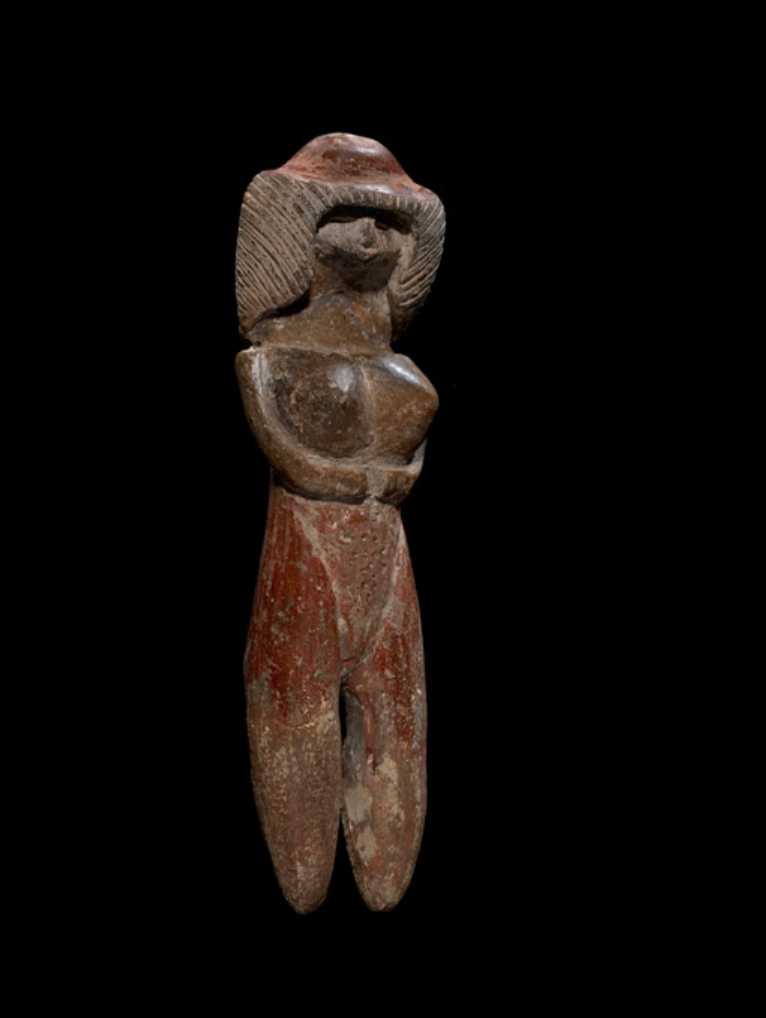
Long before the Spanish arrived in Latin America, people known as the Valdivia lived in Ecuador making incredible pottery that survived hundreds of years of conquest and culture change. The Valdivia Female Figures date back to 3500 BC and are the oldest know pottery in the western hemisphere. They were formed from a block of clay and some were painted with a red dye to contrast the natural color of the clay. These figures varied in size from four to twenty centimeters but they all had key characteristics that made them easy to recognize. The National Museum of the American Indian said they are characterized by “their straight standing pose; pronounced breasts, shoulders and neck; and a raised head with a small face” (Matos). These figures and other Valdivia pottery was advanced for the time and incredibly detailed and intricate.
The Valdivia figurines were meant to represent women as well as traits that are often associated with women especially fertility (Bray). Before the Spanish “discovered” Latin America, many indigenous cultures viewed women as equal to men but with other responsibilities. Andean women still worked in the domestic sphere but their role was seen as just as important as the men working in the field. When the Spanish eventually came to Latin America they shifted this culture to one of inequality where women were inferior to men (Chasteen).
This object was created before the Spanish arrived but they show that a civilization existed long before the Spanish came as well as the culture that developed in Ecuador. It is unclear whether this figure was based on a religion or other cultural beliefs but it obviously represents some important person or value since there were many different versions made throughout time. The people of the Andes, had a sophisticated and important culture thousands of years before the Spanish forcibly changed it.
